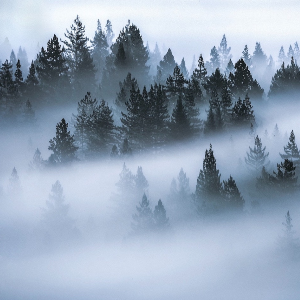
Fog
(n)Fog is a visible aerosol consisting of tiny water droplets or ice crystals suspended in the air at or near the Earth's surface.
View moreFog can be considered a type of low-lying cloud, usually resembling stratus.
View moreIn turn, fog has affected many human activities, such as shipping, travel, and warfare.
View moreThe term "fog" is typically distinguished from the more generic term "cloud" in that fog is low-lying, and the moisture in the fog is often generated locally.
View moreBy definition, fog reduces visibility to less than 1 kilometre (0.62 mi), whereas mist causes lesser impairment of visibility.
View moreFog forms when the difference between air temperature and dew point is less than 2.5 °C (4.5 °F).
View moreFog begins to form when water vapor condenses into tiny liquid water droplets that are suspended in the air.
View moreFog, like its elevated cousin stratus, is a stable cloud deck which tends to form when a cool, stable air mass is trapped underneath a warm air mass.
View moreFog normally occurs at a relative humidity near 100%.
View moreHowever, fog can form at lower humidities, and can sometimes fail to form with relative humidity at 100%.
View moreFog commonly produces precipitation in the form of drizzle or very light snow.
View moreDrizzle occurs when the humidity of fog attains 100% and the minute cloud droplets begin to coalesce into larger droplets.
View moreThis can occur when the fog layer is lifted and cooled sufficiently, or when it is forcibly compressed from above by descending air.
View moreThe thickness of a fog layer is largely determined by the altitude of the inversion boundary, which in coastal or oceanic locales is also the top of the marine layer, above which the air mass is warmer and drier.
View more